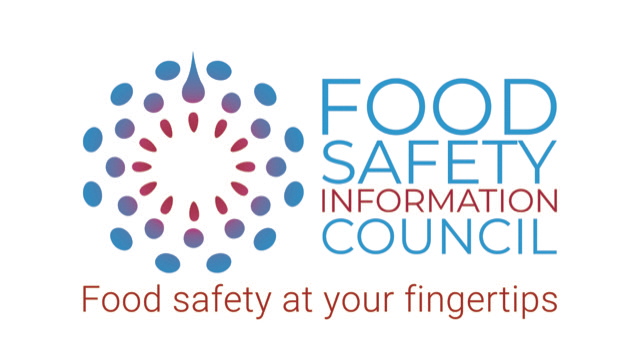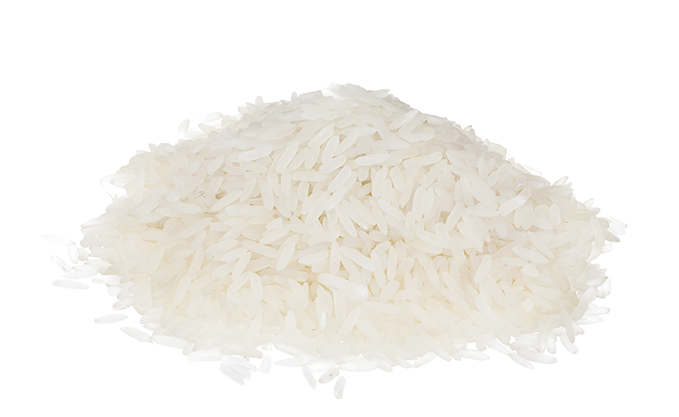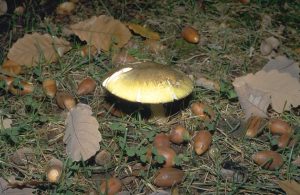How to handle riskier foods
Eggs
Eggs are a simple, cost effective and nutritious part of our diet. You should be aware though that eggs can be contaminated by the food poisoning bacterium Salmonella when they are laid. While the egg industry supplies fresh eggs as safe as possible they can be a source of food poisoning if not handled or cooked properly.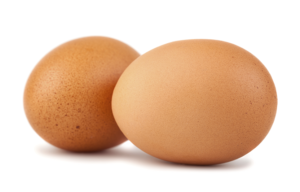
This is particularly true for uncooked dishes, sauces and dressings containing raw or lightly cooked eggs. Examples of dishes that have commonly caused outbreaks of food poisoning include uncooked desserts such as mousses and tiramisu; sauces and dressings such as hollandaise; fresh mayonnaise, and aioli; drinks containing raw egg such as egg nog and health shakes with added raw egg, and steak tartare. These foods are risky if eaten uncooked and need to be handled safely.
Some other foods containing raw egg you might not think about and that have caused food poisoning during preparation or after inadequate cooking include: pies glazed with raw eggs, raw dough (pasta, muffins) or batter (pancakes) eaten before baking/cooking, the coating used for deep fried ice cream, dumplings undercooked by adding for only a very short time to already cooked stew, soup or broth.
Consumption of foods containing raw or minimally cooked eggs alone or in combination with other ingredients is currently the single largest cause identified in foodborne outbreaks caused by Salmonella. OzFoodNet reported that in 2011 in Australia, more than one third of all foodborne outbreaks identified were linked to eggs and egg-based dishes (29 outbreaks, affecting 498 people in total). These outbreaks represented just under half of all the outbreaks caused by Salmonella.
The foods linked with these outbreaks included many of those listed above. In 2011, two thirds of the outbreaks were linked to food prepared in takeaways, restaurants, bakeries and care facilities, with the remaining one third prepared in private residences. In these outbreaks, OzFoodNet reported that eating raw eggs or food or ingredients containing raw eggs, undercooking and cross-contamination of food, and poor cleaning of food preparation equipment were practices leading to the food eaten being unsafe.
According to a national Newspoll survey conducted for the Food Safety Information Council, nearly 20% of Australians are taking risks by not handling uncooked foods containing raw egg correctly. Almost 1 in 5 surveyed did not know that homemade mayonnaise containing egg should be refrigerated straight away: with 9% incorrectly saying refrigerate it after a few hours, 2% incorrectly saying it could be left out of the refrigerator overnight and 7% not knowing what to do at all.
Safety tips
Follow these tips to minimise your risk of food poisoning from eating eggs:
- Stop and think about where an egg comes from It’s always important to follow good hygiene when handling eggs so as to not transfer contamination from the egg shell surface to other foods you are handling that are not going to be cooked.
- Dishes containing raw eggs as an ingredient, that aren’t going to be cooked before being eaten, should not be served to vulnerable people at greater risk from food poisoning such as small children, pregnant women, the elderly and people with compromised immune systems.
- Egg meals should be cooked for these vulnerable people until the yolk in a boiled egg has started to become firm or eggs have become set in omelets or scrambled eggs.
- Do not buy cracked or dirty (e.g. visible faeces, feathers) eggs. These are more likely to be contaminated with Salmonella. Bring the presence of any eggs like this to the attention of the seller as it against food safety legislation to sell cracked and dirty eggs. If eggs get a crack in them while you handle or transport them, it’s safest to discard them or cook them thoroughly as soon as possible, for example in a baked cake.
- If you accidentally drop pieces of shell into your egg mixture while preparing food, it could contaminate the mixture and it will need thorough cooking. Remove the shell pieces with a clean spoon or fork.
- Wash your hands with soap and running water and dry thoroughly before handling any food including raw eggs and after handling eggs so you don’t contaminate other food.
- If you are not going to cook the eggs further, don’t separate the yolk from the white using the shell as that could contaminate either part of the raw egg. Invest in an egg separator.
- Prepare raw egg foods just before you are going to consume them and if you need to store the dish refrigerate it immediately at 5°C or below, so the bacteria cannot grow.
- It is recommended to keep your eggs refrigerated in the cardboard box you purchased them in. This will not only keep them fresh longer, but you’ll also be able to check the ‘best before’ date on the box.
Have chooks at home?
If you have your own hens, keep the nesting materials and litter clean and dry and change it regularly, gather eggs from their nesting places daily. Carefully check any eggs for cracks, wipe off any visible dirt with a dry cloth or paper towel but don’t wash the eggs in water – this can transfer the contamination into the egg contents. Always remember to wash your hands with soap and water and dry thoroughly after handling eggs. If your children and grandchildren have been helping to collect the eggs, be sure they wash their hands too.
Fruit and vegetables
Fruits and vegetables
Fruits and vegetables together with legumes and grains make up around 70% of a healthy diet. Plant foods provide a wide variety of nutrients and it is recommended Australian older children, teens and adults aim to eat at least two serves of fruit and five serves of vegetables or legumes each day.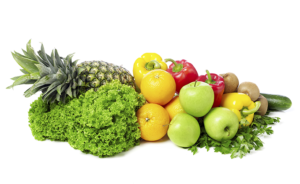
Australians are lucky to have available an abundant supply of diverse and high quality fruits and vegetables. Fruits and vegetables, like other foods, should be handled with care to ensure they are nutritious and also safe. Many are eaten raw and therefore need to be protected from contamination with bacteria, viruses and harmful microorganisms. If they are cooked most harmful bacteria and viruses present will be killed.
How can fruits and vegetables be contaminated?
There are many types of fruits and vegetables and they are grown in many different ways: in open fields or enclosed structures; in soil or in water; on vines and trees, or in the case of sprouts they are germinated from seeds. They can be grown on a commercial scale on farms, and in home or community gardens.
Fresh fruits and vegetables can at times be contaminated with food poisoning microorganisms (e.g. bacteria and viruses) as they grow and are harvested on farm, during packaging, transport and food preparation. Fruits and vegetables can also become contaminated in the kitchen through contact with other contaminated raw foods, utensils and surfaces during preparation and storage. They can be contaminated by people handling them when they are sick and don’t practice safe hand washing and hygiene, or by washing them in unsafe water.
Purchasing fruits and vegetables
When you shop, avoid purchasing damaged (e.g. where the skin is broken) or mouldy fruit and vegetables. Check pre-cut products and salads to be sure you will consume them before the use by date expires, and that they are displayed chilled (e.g. in refrigerated cabinet). Protect fresh fruits and vegetables from contamination when shopping and transporting home by placing in plastic bags (mushrooms should be stored in paper bags for better quality) and keeping separated from raw meat, poultry and seafood. Refrigerate all pre-cut and packaged products, check for manufacturers’ storage instructions, and keep fresh fruits and vegetables in the special drawers separate from raw meats, poultry and seafoods.
Community and home gardens
Growing your own fruits and vegetables can be fun and provide a supply for fresh and nutritious produce. In our information on food safety basics and the environment we provide some tips for urban growers. Care is required in selecting the location, in using safe fertilisers and water, and protecting plants from pests. People tending and harvesting fresh produce should practice good hygiene.
Can food poisoning bacteria and viruses be removed from fruits and vegetables?
Whole fruits and vegetables will be contaminated mainly on the surface. Scrubbing and washing them in water or with sanitisers will remove loose soil and may remove many bacteria and viruses, as can removal of the skin.
However, fruits and vegetables are highly variable – they are not all easily cleaned and some are eaten with the skin on. For example, some have rough skins (e.g. rockmelons) making it difficult to clean, while others are very fragile (e.g. raspberries). Bacteria and viruses can be protected in cuts and crevices, so even after washing, at times there can still be contamination present.
When fruits and vegetables are cut, or if they are damaged, bacteria and viruses can be transferred from the surface onto the flesh. Cut fruits and vegetables should therefore be stored chilled and consumed within a few days [or within use-by date].
When you purchase packaged or wrapped pre-cut fruits and vegetables, you should check for instructions for storage and preparation. For example, pre-cut salad greens may have already been washed and sanitised during processing and are ready for use and re-washing these may only risk further contamination from the kitchen. Whole lettuce on the other hand may have instructions they should be washed before use.
Storage
You don’t have to store most whole fruit and vegetables in the fridge for safety. For example, store potatoes in a cool dark place where they won’t start to sprout as this generates toxins. Brush off any visible soil from vegetables and wash under running water and dry any fruit or vegetables just before you use them. If you wash them and then store them they may begin to grow moulds. If you’ve handled visibly dirty vegetables, like potatoes with soil on them, make sure you wash your hands, knife, peeler, and chopping board before you handle and prepare other foods. Mushrooms should be stored in the fridge in paper bags for better quality. See this advice from the CSIRO on storage
Once whole vegetables and fruit are cut up or if their skin is damaged they should be covered and stored in the fridge where they can’t be contaminated by other food especially raw meat, chicken or seafood. Refrigeration slows the growth of food poisoning bacteria such as Salmonella and pathogenic E. coli on cut surfaces and the cut fruit can be stored for 2-3 days. However, it won’t stop the growth of Listeria and pregnant women, elderly and immuno-compromised persons should not eat these if stored longer than a day in the refrigerator.
Freezing
If you have excess fruits and vegetables you can freeze them by cutting up and blanching them by dipping them into boiling water – not only does this lock in the colour, flavour and texture, but it can also kill most food poisoning bacteria. It is best to freeze them by spreading in a single layer on trays, freezing, and then pack them in smaller portions for further storage. Frozen fruits and vegetables can safely be stored for a number of months, although there can be a loss in nutrient value and quality over time.
Home bottling or canning
Be vigilant if you bottle excess fruit and vegetables because of the risk of botulism. Commercial canneries follow strict time and temperature heating schedules that are capable of killing the botulinal spores. In home bottling, such regimes are not possible. If you are bottling at home, stick to the high acid fruits such as pears, apples and stone fruit – acid (low pH) prevents the growth of the bacteria that causes botulism. If you bottle tomatoes, mango, paw paw, banana or any other tropical fruit you must add some citric acid. Vegetables can only be safely bottled if bottled in vinegar.
If you want to produce your own vegetables in oil or flavoured oils you can keep them refrigerated for up to 10 days. If you want to bottle them, you need to acidify the vegetables and any fresh herbs first.
Pasta and rice
Most people are surprised that cooked pasta and rice is a food poisoning risk. In fact if you are entertaining and your fridge is full it is often the cooked rice or pasta that is left out.
Dried rice and pasta will last a considerable time so follow the best before date on the packaging.
Once it is cooked and begins to cool then toxins formed by Bacillus cereus can form heat resistant spores and a heat resistant toxin. If cooked food is allowed to cool slowly the spores can germinate and reheating or lightly cooking the food will not destroy this toxin. The bacteria can grow and produce toxin at refrigeration temperatures, it does so much more slowly than at room temperature.
Precooked food should not be stored in the refrigerator for more than two to three days.
Poultry
Chicken is a healthy, convenient meal and is Australia’s most popular meat with over 8 out of every 10 cooks choosing chicken. Other poultry is also becoming popular with just under half of those surveyed cooking whole turkey and 37% whole duck.
Remember that poultry includes not only chickens, turkey and duck but also quail, squab (pigeons), geese, pheasants, and guinea fowl. Chicken can also be sold as capons and spatchcock.
You should always take particular care when handling and cooking raw poultry as birds are small animals and their raw meat can be contaminated all the way through by food poisoning bacteria.
How to handle poultry correctly
You can reduce the risk of cross contamination from raw poultry by following these simple tips:
- Do not wash raw poultry before cooking as this will spread any bacteria throughout your kitchen. You can mop up any excess moisture with paper towel.
- Always wash and dry hands and clean surfaces after contact with raw poultry.
- Defrost poultry in the fridge or microwave in a container which prevents juices dripping on other food.
- Make sure the raw poultry juices do not contaminate other food, especially food like desserts or salads that won’t be cooked again.
- Always use clean plates and utensils and wash and dry thoroughly between using for raw and cooked poultry. Never place cooked food back on the same plate or cutting board that previously held raw poultry.
- Also cook any poultry meat to 75°C using a meat thermometer in the thickest part or until the juices run clear and are no longer pink. Make sure frozen poultry is defrosted right through to the centre before cooking.
Research
A Food Safety Information Council national survey showed 60% of home cooks in Australia are putting themselves at additional risk of food poisoning by washing whole poultry before it is cooked which spreads bacteria around the kitchen. A further 16% of those surveyed incorrectly tasted chicken to see if it was cooked properly rather than use a safe and accurate meat thermometer.
6 in 10 home cooks washed whole chicken before they cooked it, with 5 in 10 washing chicken pieces with skin on and 4 in 10 washing skinless chicken pieces.
Notified cases of illness from Campylobacter and Salmonella in Australia have almost doubled over the last 20 years. OzFoodnet estimates there are approximately 220,000 cases of Campylobacter infection each year with more than 75% transmitted by food and 50,000 cases of Campylobacter infection each year can be attributed either directly or indirectly to chicken meat.
Red meat
Beef, lamb, pork, venison and kangaroo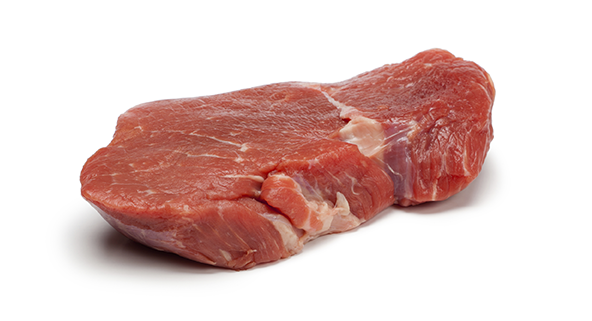
Whole pieces of meat
Steaks, chops and other whole pieces of meat can be cooked to preference. As long as it is heated on the outside to kill bacteria it doesn’t matter if it is rare inside. This is because a whole piece of meat, such as a steak, can only be handled or be open to contamination on the surface. Any bacteria on or near the surface will be easily killed during cooking.
Pork
Pork does not need to be overcooked to be safe. It is a myth that pork is any more unsafe than the equivalent beef or lamb for cooking and when cooked as recommended there may be a faint hint of pink in the centre
Mince, hamburgers, sausages and rolled/stuffed meat
When meat is minced or a bone is removed or it is rolled or the muscle is slit for stuffing, bacteria can penetrate into the centre of the meat. Use a meat thermometer to make sure you always cook minced or boned meat, hamburger, stuffed meat and sausages until 75°C to make sure all the bacteria are killed.
Stews, sauces and gravies
Clostridium perfingens likes the sort of conditions you get in casseroles, stews, gravies, pie fillings and any other bulk cooked foods when they cool. In the warm conditions of cooling food, the spores germinate and grow. Whenever you cool food, make sure you cool it quickly by transferring it into a shallow container and refrigerating it when the steam stops rising. A large stockpot, even in a commercial fridge can take several days for the centre temperature in the pot to reach 5° C. Use or freeze leftovers within two to three days.
Defrosting and leftovers
Defrost rolled and stuffed meat completely before cooking or else they may not cook right through. Always follow cooking instructions on packaged food. Don’t forget to reheat leftovers to steaming hot before eating.
Cross contamination
Never put cooked meat onto the same plate on which you had the raw meat. Don’t let raw meat drip on or touch other foods, especially if that food won’t be cooked further such as a salad or dessert.
See more on cross contamination
Seafood
Seafood, especially shellfish, has had bad food safety press in the past. However, Australia has a well-deserved reputation for high quality and safe seafood and commercially produced seafood sold in Australia must adhere to strict quality controls.
Do not consume shellfish you have harvested yourself unless you know the water it is grown in is safe. For example, not near sewage outlets or septic systems runoff. Check with the State or Territory authorities for banned fishing or shellfish harvesting areas or fishing seasons. If you catch your own fish ensure you consume it or refrigerate it as soon as possible. If you’ve been lucky enough to catch more than you can eat in a day or two, or have caught large fish, gut or fillet them and place in the freezer. These can then be defrosted and cooked later as needed.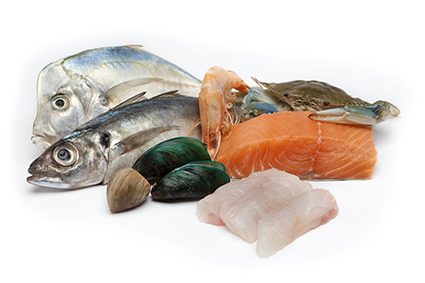
If seafood is cooked most common food poisoning bacteria and viruses will be killed; however, cooking won’t remove all toxins and chemical pollutants in shellfish and fish. To avoid these risks, seafood should only be harvested from safe waters, chilled and stored correctly and purchased from licensed suppliers. There are additional risks if the seafood is consumed raw, for example raw oysters and raw fish used for sashimi. Precooked prawns, bugs or crabs can be contaminated by your hands when they are peeled or shelled. You will need to be particularly careful and hygienic in preparing these and don’t handle pre-cooked food if you have exposed infections on your hands or have gastro. Raw seafood including oysters aren’t recommended for people at risk like pregnant women, people with reduced immune systems, the elderly or young children.
Here are 6 tips to reduce your risk of food poisoning from seafood you purchase to help keep it safe:
- Only purchase your seafood from a registered seafood supplier and check it is visibly fresh and is displayed chilled
- Transport your seafood home from the retailer in a cooler with enough ice blocks or ice to keep it chilled
- Once home put seafood in the fridge in a covered container and make sure your fridge is running at 5°C or below. Live shellfish, such as oysters, should be kept on ice and consumed as soon as possible after shucking.
- If the seafood is going to be cooked this will kill most bacteria but there could be a slight risk if it is consumed raw, for example raw oysters, sushi, sashimi. You will need to be particularly careful and hygienic in preparing these raw foods and also handling pre-cooked seafood such as cooked prawns.
- Seafood eaten raw or cold cooked prawns are not recommended for pregnant women, people with reduced immune systems or the elderly because of the risk of Listeria.
- Consume prawns and live shellfish as soon as possible after purchase when they are at their best and use other refrigerated seafood within 2 to 3 days.
Natural toxins in fish
Escolar (Lepidocybium flavobrunneum) and oilfish (Ruvettus pretiosus) have been responsible for a number of food poisoning outbreaks involving a type of oily diarrhoea, called keriorrhoea. For example, investigation of some Australian outbreaks of oily diarrhoea suggest between 45 and 67 per cent of people may become ill after eating these fish species. There is probably a significant under-reporting of illness associated with the consumption of these fish as the symptoms can be mild and short-lived.The oily diarrhoea is caused by indigestible oil contained in these fish, which accumulates in the rectum before being expelled. Symptoms range from an oily orange or yellow discharge, to severe diarrhoea with nausea and vomiting. Other symptoms may include stomach cramps, loose bowel movements and headache. The symptoms can occur without warning, usually within 2 ½ hours of consumption, but range from 1 to 90 hours later. Unlike other forms of diarrhoea, the oily diarrhoea caused by these fish does not cause significant loss of body fluid and is not life-threatening. Symptoms may last for one or two days.
If you are pregnant, have a bowel problem or malabsorption, you are advised not to consume these fish. If you are eating these fish for the first time, consume only a small portion. If you experience gastrointestinal symptoms after eating this fish, do not consume this fish in future and seek medical advice if symptoms persist.
Fish: naturally occurring mercury. Fish is great for your health and everyone should eat two to three serves of fish a week for good health. However, some of the larger species of fish, such as shark, marlin and swordfish, have levels of naturally occurring mercury. These species can build up levels of mercury because they are predatory and eat smaller fish and they also live a long time absorbing mercury from the ocean.
The effects in babies exposed to high levels of mercury in the womb can include lower scores on tests that measure attention, learning and memory in their early years. Pregnant women, women planning pregnancy and young children shouldn’t eat shark, broadbill, marlin and swordfish more than once a fortnight, with no other fish eaten that fortnight. They also shouldn’t eat orange roughy (also sold as sea perch) and catfish, more than once a week, with no other fish eaten during that week.
The general population should eat only one serve per week of Shark (Flake) or Billfish (Swordfish / Broadbill and Marlin) and no other fish that week. Check the mercury in fish advice from Food Standards Australia New Zealand.
There are plenty of other types of fish to choose for your two to three serves a week. Check with your fish retailer about the type of fish you are buying or check the ingredient list on a package or can.
Ciguatera food poisoning is an unusual form of food poisoning most typically caused by larger and older fish that live in warm ocean waters. However smaller warm ocean water finfish may also be implicated. The poisoning is caused by people eating fish containing the ciguatera toxin. The contaminated fish have eaten smaller fish that eats the algae that shelters a tiny organism responsible for producing a toxin that causes ciguatera.
Within 24 hours symptoms emerge including numbness around the fingers, toes and mouth, a burning sensation when in contact with cold, joint pain, nausea, itchiness and for people with high sensitivity, breathing difficulties. Problems may be encountered with eating coral trout, spanish mackerel, reef cod, barracuda, emperor, groper, sturgeon, trevally and kingfish. Any warm water predatory fish over 6 kg should be treated with suspicion. Under no circumstances should the head, roe or liver be eaten, and it is wise to eat a small portion of any large fish to test for reactions 24 hours before serving. If you develop symptoms seek medical advice.
Scombroid or histamine poisoning is the result of inadequate temperature control of fish. It can occur when fish that has not been chilled to 4°C or below is eaten. The result is a high level of histamine building up in the fish flesh. Often misdiagnosed as an allergic reaction, symptoms vary but include:
- burning and tingling of the lips and mouth
- dizziness
- flushing of the face
- an itchy rash, often on the face, neck, chest and upper back
- sweating
- vomiting and diarrhoea
- headaches
- blurred vision
- palpitations.
In severe cases, and particularly in those suffering from asthma, bronchial difficulties can occur.
Usually not of major concern, deaths overseas have focused attention on Scombroid poisoning.
Unpasteurised (raw) milk and cheese
Nearly all dairy products in Australia, such as milk, cheese and yoghurt, are pasteurised. This means they have been heat treated for a short period to kill any bacteria. Pasteurisation has done a great deal to reduce food borne disease over the years.
It is illegal to sell unpasteurised (raw) cow’s milk in Australia for human consumption and health authorities recommend that it should not be consumed.
There are also a few unpasteurised hard or semi-hard cheeses imported into Australia including extra hard type cheeses (parmesan types), the Swiss cheeses Emmental, Gruyere and Sbrinz, and Roquefort cheese but these have to undergo strict production processes and testing. They must be labelled that they have not been pasteurised.
Vulnerable people such as pregnant women, people with reduced immune systems, the elderly or young children should not consume raw milk or raw milk cheeses as they can get seriously ill if they get food poisoning.
If you milk your own cow or goat, always ensure that it is healthy and here is a simple method to pasteurise milk at home:
- Using a double boiler, place the milk in the top and water in the bottom.
- Place an accurate, metal-stem thermometer and spoon in the milk during the entire pasteurization process. A metal-stem thermometer is preferred over glass because it will not break.
- Heat the milk, while stirring constantly, to 75°C and hold it at that temperature for no less than 15 seconds. Constant stirring is important for obtaining even distribution of the heat and to ensure that all the milk is heated to 75°C.
- At the end of the 15-second holding time, place the top portion of the double boiler containing the milk in a pan of cold water. Continue stirring the milk to achieve rapid cooling.
- When the milk temperature is below 55°C, replace the cooling water with ice water and continue to cool the milk, with occasional stirring, until the temperature is 5°C or below.
- Pour the cooled milk into clean containers, cover, and store in the refrigerator at 5°C or colder until used.
Natural toxins in food
Food contains natural chemicals, including carbohydrates, sugars, proteins and vitamins. But some foods contain potentially harmful natural toxins. Sometimes a toxin is present as a naturally occurring pesticide to ward off insect attack or to protect the plant from spoilage when damaged by weather, handling, UV light or microbes.
Your own sensitivity to a natural toxin, the concentration (level) of the toxin in the food, and the amount of the food consumed will determine whether you have an adverse reaction and the severity of symptoms you experience.
If you have symptoms or feel unwell contact the Poisons Information Centre on 13 11 26 (24 hours)
The commonly eaten foods listed here may contain natural toxins and consumers are protected by maximum limits for them in the Australia New Zealand Food Standards Code You can also limit your exposure to natural toxins by following the simple practices outlined below.
Alcohol
The National Health and Medical Research Council’s Australian Guidelines to Reduce Health Risks from Drinking Alcohol advise both men and women to drink no more than two standard drinks per day to reduce their health risks over a lifetime. Young people (up to 18 years of age) are advised not to drink alcohol at all. Women who are pregnant, planning a pregnancy or breast feeding are advised not to drink.
Cassava and bamboo shoots
Naturally occurring cyanogenic glycosides in raw or unprocessed cassava and bamboo shoots can lead to exposure to the toxin hydrogen cyanide.
Cassava is also known as yuca, tapioca (a processed product of cassava), gaplek or manioc. Bamboo shoots, a traditional ingredient of Asian cuisine, are sourced from the underground stems of the bamboo plant.
To avoid exposure to these toxins, sweet cassava should be properly prepared before eating. Peel and slice the cassava and then cook it thoroughly, either by baking, boiling or roasting. Frozen cassava, and frozen peeled cassava should also be prepared in this way.
Fresh bamboo shoots should be sliced in half lengthwise, the outer leaves peeled away and any fibrous tissue at the base trimmed off. The remaining fresh shoots should then be thinly sliced into strips and boiled in lightly salted water for eight to ten minutes.
Fish: Escolar and oil fish
Escolar (Lepidocybium flavobrunneum) and oilfish (Ruvettus pretiosus) have been responsible for a number of food poisoning outbreaks involving a type of oily diarrhoea, called keriorrhoea. For example, investigation of some Australian outbreaks of oily diarrhoea suggest between 45 and 67 per cent of people may become ill after eating these fish species. There is probably a significant under-reporting of illness associated with the consumption of these fish as the symptoms can be mild and short-lived.
The oily diarrhoea is caused by indigestible oil contained in these fish, which accumulates in the rectum before being expelled. Symptoms range from an oily orange or yellow discharge, to severe diarrhoea with nausea and vomiting. Other symptoms may include stomach cramps, loose bowel movements and headache. The symptoms can occur without warning, usually within 2 ½ hours of consumption, but range from 1 to 90 hours later. Unlike other forms of diarrhoea, the oily diarrhoea caused by these fish does not cause significant loss of body fluid and is not life-threatening. Symptoms may last for one or two days.
If you are pregnant, have a bowel problem or malabsorption, you are advised not to consume these fish. If you are eating these fish for the first time, consume only a small portion. If you experience gastrointestinal symptoms after eating this fish, do not consume this fish in future and seek medical advice if symptoms persist.
Fish: naturally occurring mercury
Fish is great for your health and everyone should eat two to three serves of fish a week for good health.
However, some of the larger species of fish, such as shark, marlin and swordfish, have levels of naturally occurring mercury. These species can build up levels of mercury because they are predatory and eat smaller fish and they also live a long time absorbing mercury from the ocean.
The effects in babies exposed to high levels of mercury in the womb can include lower scores on tests that measure attention, learning and memory in their early years.
Pregnant women, women planning pregnancy and young children shouldn’t eat shark, broadbill, marlin and swordfish more than once a fortnight, with no other fish eaten that fortnight. They also shouldn’t eat orange roughy (also sold as sea perch) and catfish, more than once a week, with no other fish eaten during that week.
The general population should eat only one serve per week of Shark (Flake) or Billfish (Swordfish / Broadbill and Marlin) and no other fish that week.
Check the mercury in fish advice from Food Standards Australia New Zealand.
There are plenty of other types of fish to choose for your two to three serves a week. Check with your fish retailer about the type of fish you are buying or check the ingredient list on a package or can.
Fish: Ciguatera food poisoning
Ciguatera is an unusual form of food poisoning most typically caused by larger and older fish that live in warm ocean waters. However smaller warm ocean water finfish may also be implicated. The poisoning is caused by people eating fish containing the ciguatera toxin. The contaminated fish have eaten smaller fish that eats the algae that shelters a tiny organism responsible for producing a toxin that causes ciguatera.
Within 24 hours symptoms emerge including numbness around the fingers, toes and mouth, a burning sensation when in contact with cold, joint pain, nausea, itchiness and for people with high sensitivity, breathing difficulties.
Problems may be encountered with eating coral trout, spanish mackerel, reef cod, barracuda, emperor, groper, sturgeon, trevally and kingfish. Any warm water predatory fish over 6 kg should be treated with suspicion.
Under no circumstances should the head, roe or liver be eaten, and it is wise to eat a small portion of any large fish to test for reactions 24 hours before serving. If you develop symptoms seek medical advice.
Fish: Scombroid (histamine) fish poisoning
Scombroid or histamine poisoning is the result of inadequate temperature control of fish. It can occur when fish that has not been chilled to 4°C or below is eaten. Usually not of major concern, deaths overseas have focused attention on Scombroid poisoning.
The result is a high level of histamine building up in the fish flesh. Often misdiagnosed as an allergic reaction, symptoms vary but include:
- burning and tingling of the lips and mouth
- dizziness
- flushing of the face
- an itchy rash, often on the face, neck, chest and upper back
- sweating
- vomiting and diarrhoea
- headaches
- blurred vision
- palpitations
In severe cases, and particularly in those suffering from asthma, bronchial difficulties can occur.
Fruit seeds and pits
Apple and pear seeds and the inner stony pit (kernel) of apricots and peaches contain a naturally occurring substance called amygdalin which is a cyanogenic glycoside. Amygdalin can release hydrogen cyanide in the stomach causing discomfort or illness. It can sometimes be fatal.
There are different types of apricot kernels, some of which contain high levels of the toxin that can release cyanide into the body when eaten. Food Standards Australia New Zealand has issued advice that adults don’t eat more than three apricot kernels a day and children should not eat any.
Accidental swallowing of an occasional seed or pip is not a concern. However, do not make a habit of eating the seeds from these fruits. For a young child, swallowing only a few seeds or pits may cause illness and in rare cases can be fatal.
Kumara
Kumara, a member of the sweet potato family, can produce toxins in response to injury, insect attack and other stress. The most common toxin, ipomeamarone, can make the kumara taste bitter. There have been reports of cattle deaths after they have eaten mouldy kumara. The toxin levels are usually highest near the area of damage. It is recommended that any damaged parts on kumara are removed before cooking. Do not eat it if it tastes bitter after cooking.
Wild Mushrooms
Deathcap mushrooms have been found in the Canberra region, in and around Melbourne and even in Adelaide. They are not native to Australia and are often found near oak trees growing in warm wet weather during Autumn. The similar marbled deathcap mushrooms have also been recently found in WA. While no cases have been reported in NSW or Tasmania it may be possible that they grow there.
Deathcap mushrooms are difficult to distinguish from other wild mushrooms so we recommend you play it safe and only eat mushrooms that you have purchased from the supermarket, greengrocer or other reputable source. People born overseas, especially in Asian countries, should be aware that these deadly mushrooms can look like edible mushrooms that they may have gathered overseas.
The toxin in deathcap mushrooms is not destroyed by cooking. Symptoms include vomiting, diarrhoea and stomach cramps and often don’t appear until 10 to 16 hours after eating. These symptoms may ease for 2 to 3 days before a terminal phase of 3 to 4 days begins. Without early, effective medical intervention people may go into a coma and die after 2 or 3 weeks of liver and kidney failure.
Nine out of ten cases of mushroom poisoning in Australia result from deathcap mushrooms. However there are other wild mushrooms in Australia that, while not fatal, can make you ill with vomiting and diarrhoea. These include the yellow stainer which resembles a field mushroom and is the most commonly ingested poisonous mushroom in Victoria.
Many reported cases of fungi poisoning are in children under five years of age. Most young children who eat poisonous mushrooms find them in the garden at home. Children younger than five years of age have a natural inclination to put things in their mouths. If you have a toddler, you should regularly check your garden for mushrooms and remove them to reduce the risk of accidental poisoning.
If you suspect you may have eaten a deathcap mushroom don’t wait for any symptoms to occur but go to a hospital emergency department taking a sample of the mushroom with you if you can. You can also contact the Poisons Information Centre on 13 11 26 (24 hours a day 7 days a week).
Parsnip
Parsnips commonly contain a group of natural toxins known as furocoumarins. These are probably produced as a way of protecting the plant when it has been stressed. The concentration of the toxin is usually highest in the peel or surface layer of the plant or around any damaged areas.
One of the furocoumarin toxins can cause stomach ache and may also cause a painful skin reaction when contact with the parsnip plant is combined with UV rays from sunlight.
It is important to peel the parsnip before cooking and remove any damaged parts. The levels of toxin drop when the parsnip is cooked by baking, microwaving or boiling. Discard any cooking water.
Potatoes
All potatoes contain natural toxins called glycoalkaloids. The levels are usually low but higher levels are found in potato sprouts, and the peel of potatoes that taste bitter. The toxins are produced by the plant in response to stress such as from micro-organisms and UV light, and damage such as bruising. The amount of toxin depends on the type of potato and the growing conditions.
Severe stomach ache and even death from glycoalkaloid poisoning has been reported overseas, but is very unusual. Glycoalkaloids are not destroyed by cooking, so it is important to avoid eating the sprouts and to remove any green or damaged parts before cooking. Do not eat cooked potatoes that still taste bitter. If you come across a green potato crisp, it’s probably best not to eat it. Remember to store potatoes in a dark, cool and dry place.
Kidney beans
Many types of beans contain toxins called lectins. The highest concentrations are found in kidney beans, especially red kidney beans. As few as four or five raw beans can cause severe stomach ache, vomiting and diarrhoea.
To destroy the toxins, soak the beans for at least five hours and then boil them briskly in fresh water for at least 10 minutes. Do not cook beans at a low temperature, for example in a slow cooker, as it may not destroy the toxin. Improperly cooked beans can be more toxic than raw ones. Tinned beans can be used without further cooking.
Rhubarb
Rhubarb contains naturally occurring oxalic acid. The amount depends on the age of the plant, the season, the climate and the type of soil. Highest concentrations are in the leaves and these should not be eaten.
Oxalic acid poisoning can cause muscle twitching, cramps, decreased breathing and heart action, vomiting, pain, headache, convulsions and coma.
Zucchini (courgette)
Zucchini may occasionally contain a group of natural toxins known as cucurbitacins. These toxins give zucchini a bitter taste. Bitterness in wild zucchinis has been known for a long time but is rarely found in commercially grown zucchinis.
Eating bitter zucchinis have caused people to experience vomiting, stomach cramps, diarrhoea and collapse. Do not eat zucchini that have a strong unpleasant smell or taste bitter.
Acknowledgements
This information has been prepared with assistance from ACT Health, Food Standards Australia New Zealand, New Zealand Ministry of Primary Industry and Queensland Health.
